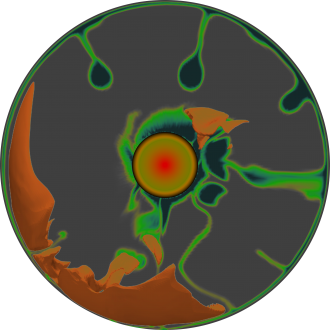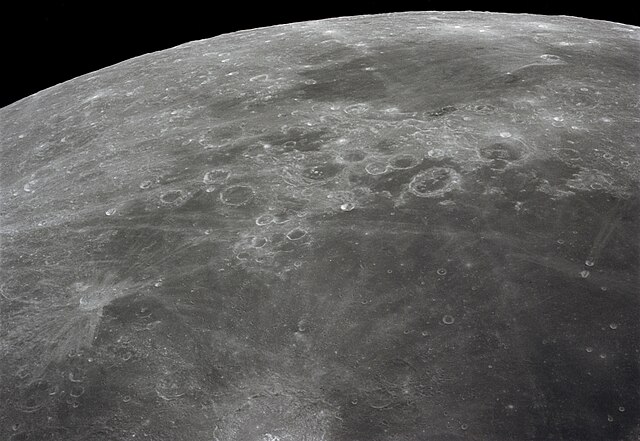News release
From:
Planetary science: Evidence of ‘mantle overturn’ on the early moon
Insights into the evolution of the early lunar mantle are revealed in a paper published in Nature Geoscience. The detection of lunar gravity anomalies provides evidence for the sinking of a dense layer in the Moon’s interior and allows for a more precise estimate of when this event could have occurred.
The crust and underlying mantle of the Moon is thought to have been formed from the crystallisation of its molten magma ocean shortly after its formation following a giant impact between Earth and another small proto-planet. Models suggest that the last dregs of the magma ocean crystallised into dense minerals including ilmenite, a mineral containing titanium and iron, in a layer between the crust and the mantle. This dense ilmenite-rich layer is thought to have been gravitationally unstable atop the mantle, with the cumulations of ilmenite eventually sinking into the interior. This type of 'mantle overturn’ event would also explain the titanium-rich composition of some volcanic rocks erupted on the Moon, but little physical evidence of either mantle overturn or the existence of an ilmenite layer has yet been found.
Weigang Liang, Adrien Broquet and colleagues compared simulations of a sinking ilmenite-rich layer to a set of lunar gravity anomalies detected by the NASA GRAIL mission. These anomalies surround the region where lunar volcanism was most concentrated. These results were then combined with the ages of lunar basins on the Moon's surface in order to determine the timing of this potential event more precisely.
The authors found that the gravity signatures from the GRAIL mission are consistent with ilmenite layer simulations, suggesting that these signals come from ilmenite remnants left after the sinking of the majority of the dense ilmenite layer. The authors then constrained the timing of this event using the known ages of lunar impact basins. They suggest that the ilmenite-rich layer sank prior to 4.22 billion years ago, which is consistent with it contributing to later volcanism seen on the lunar surface. The findings offer important insights into the evolution of the lunar mantle, and potentially for planets such as the Earth that had their own magma oceans early in their evolution.
Multimedia







 International
International


